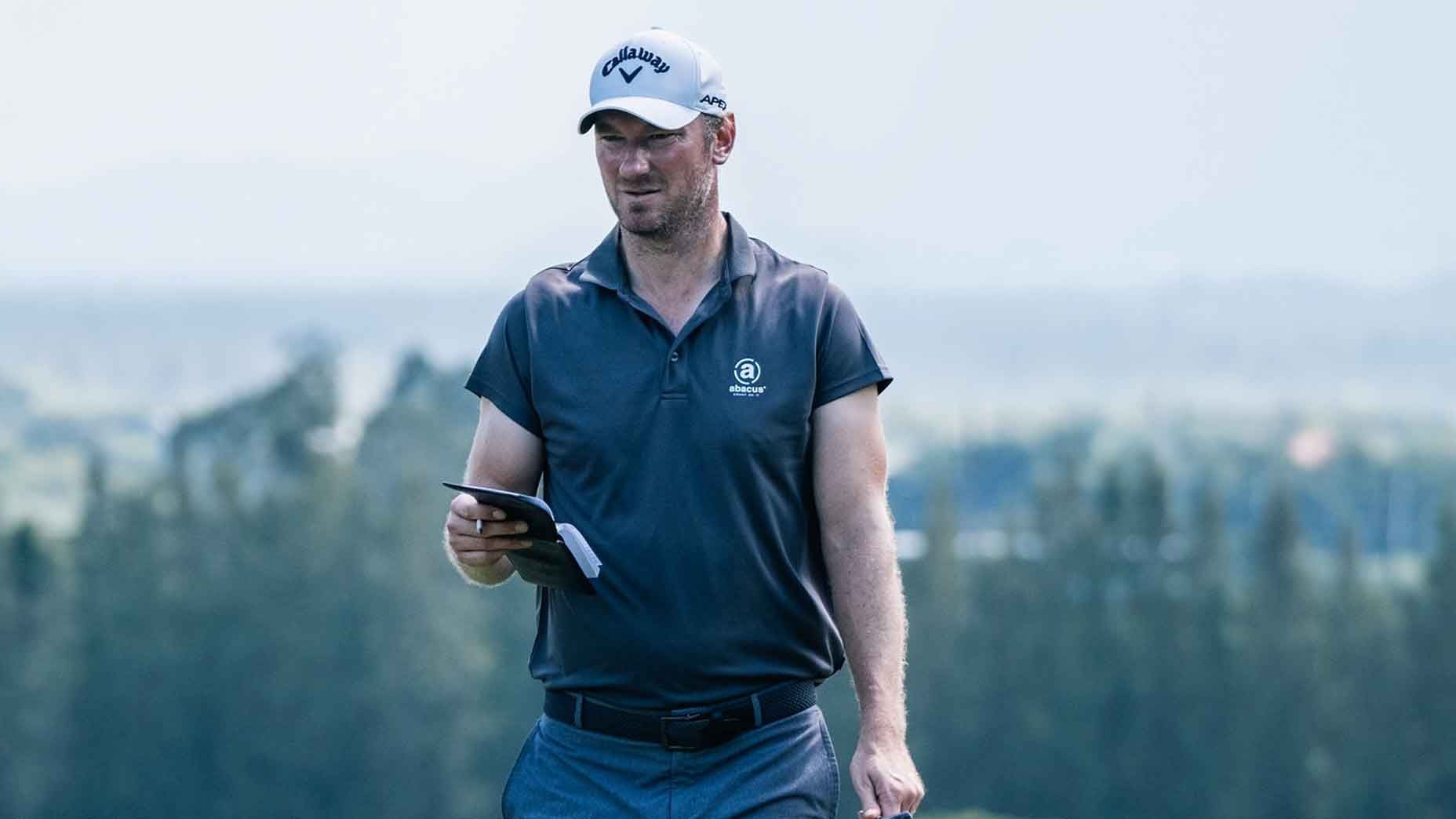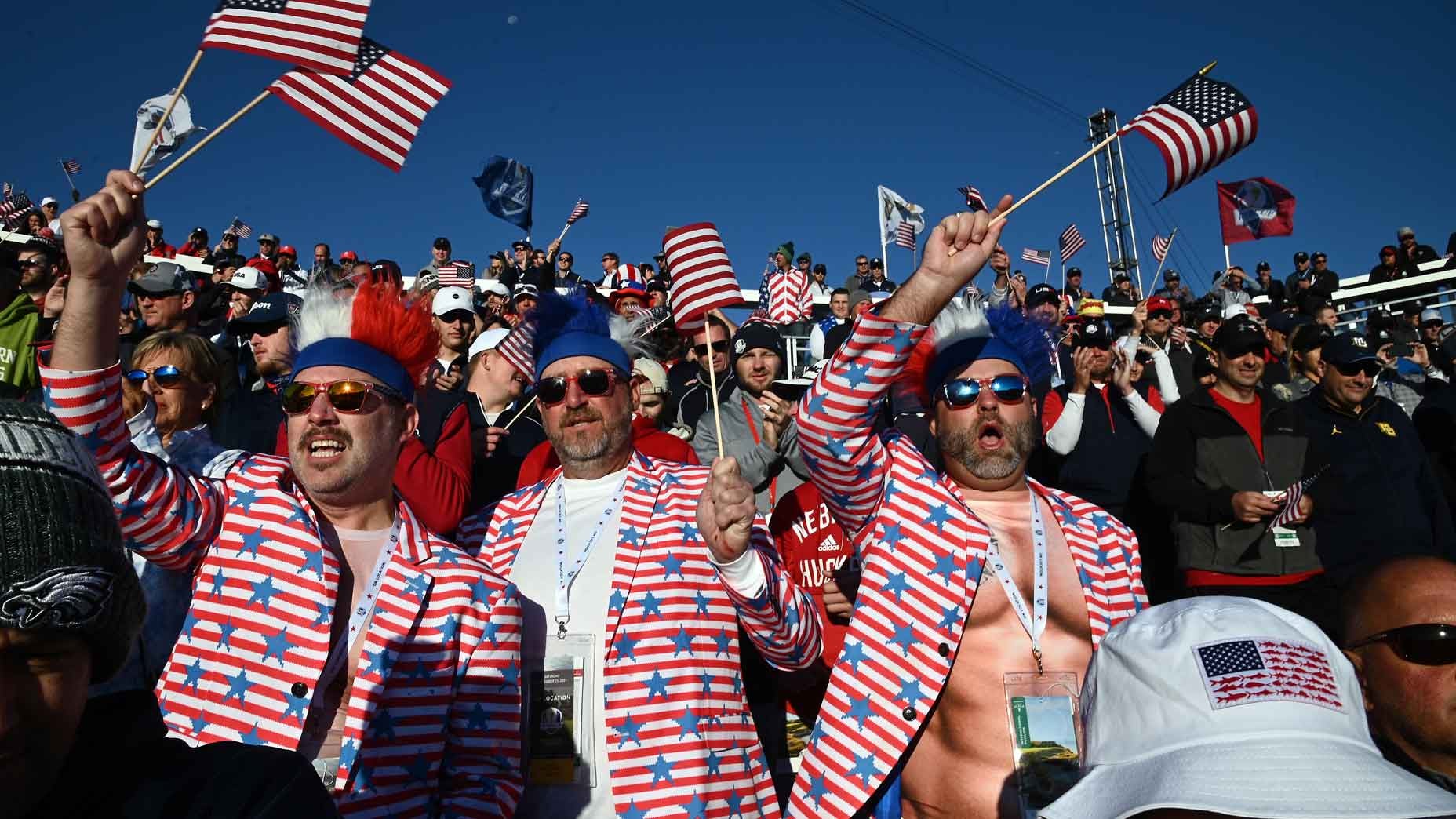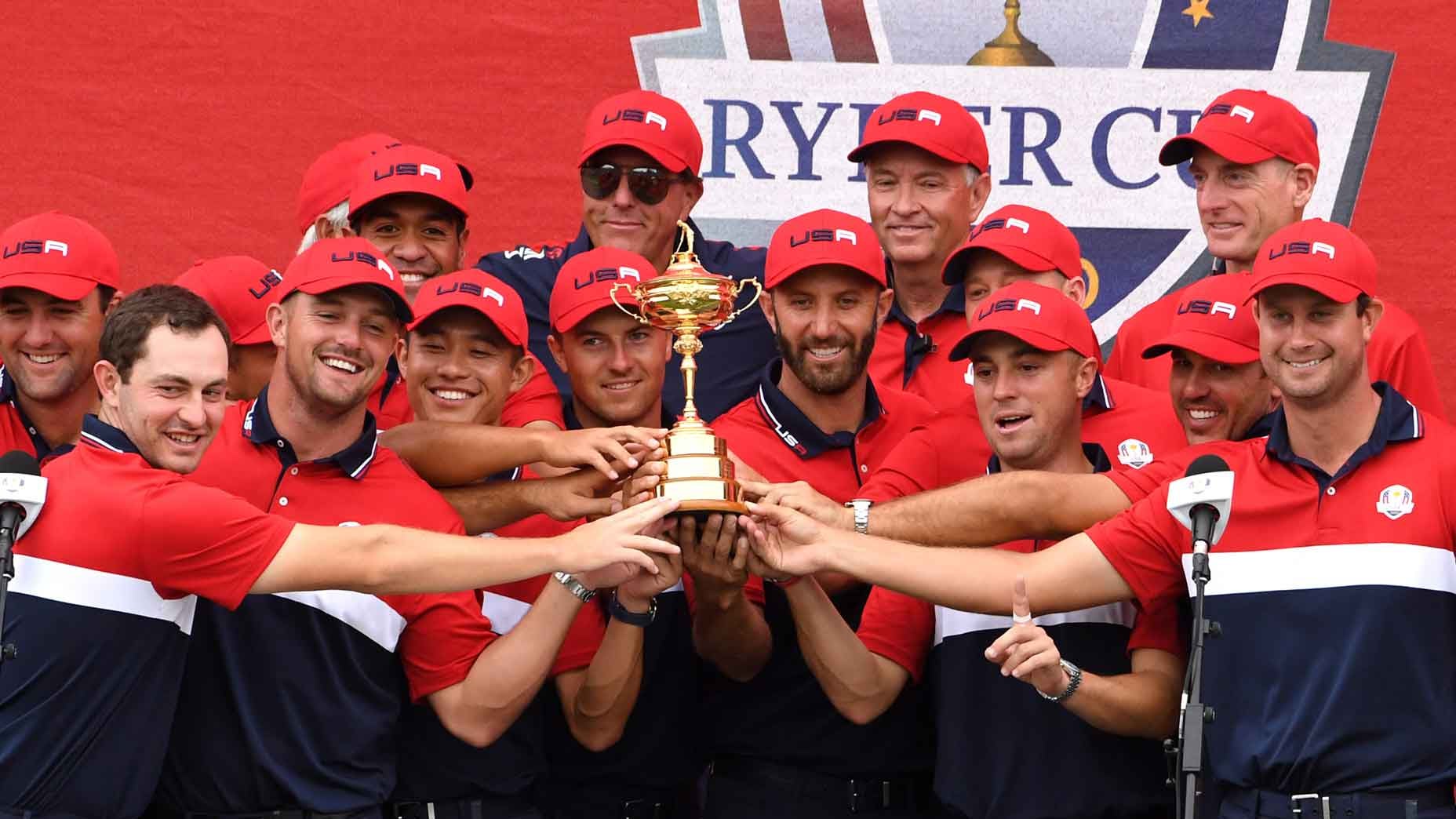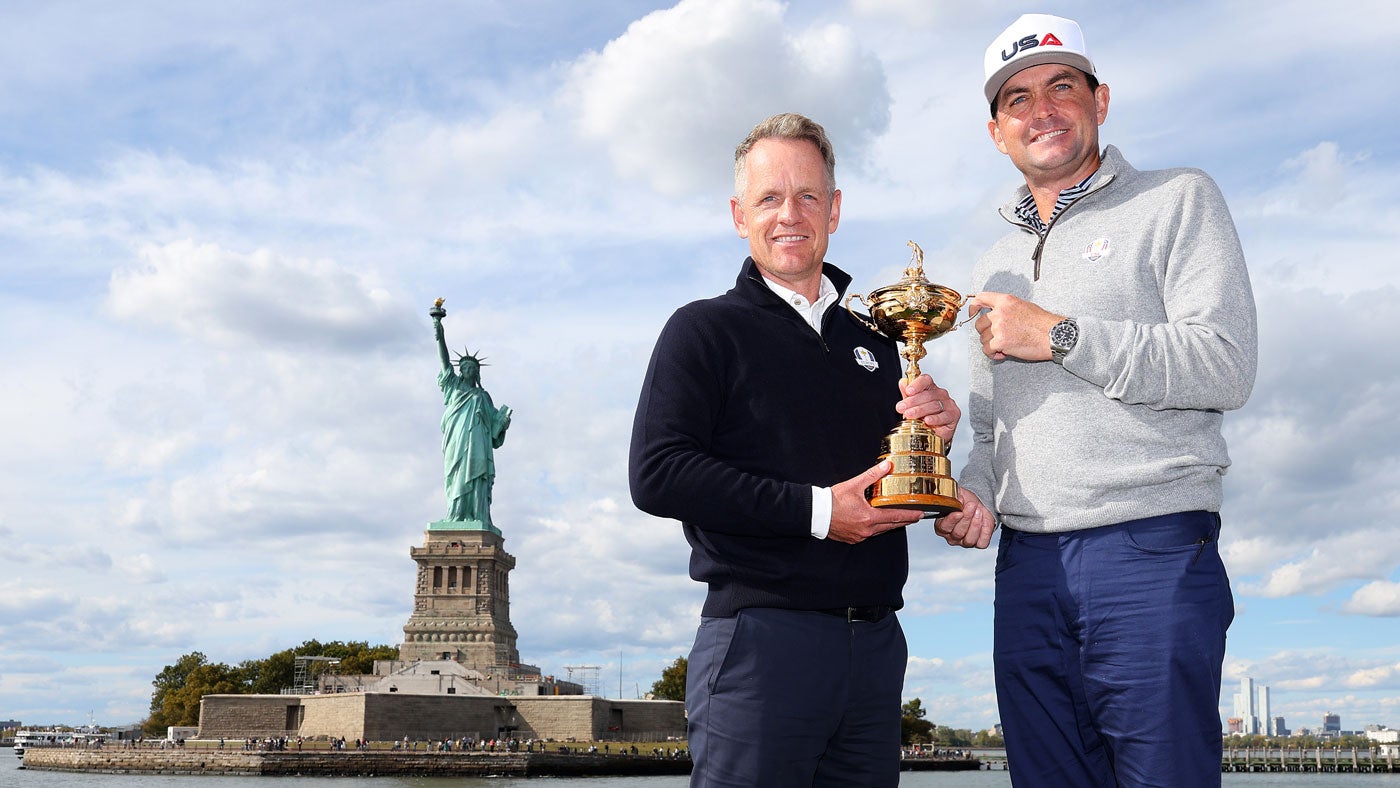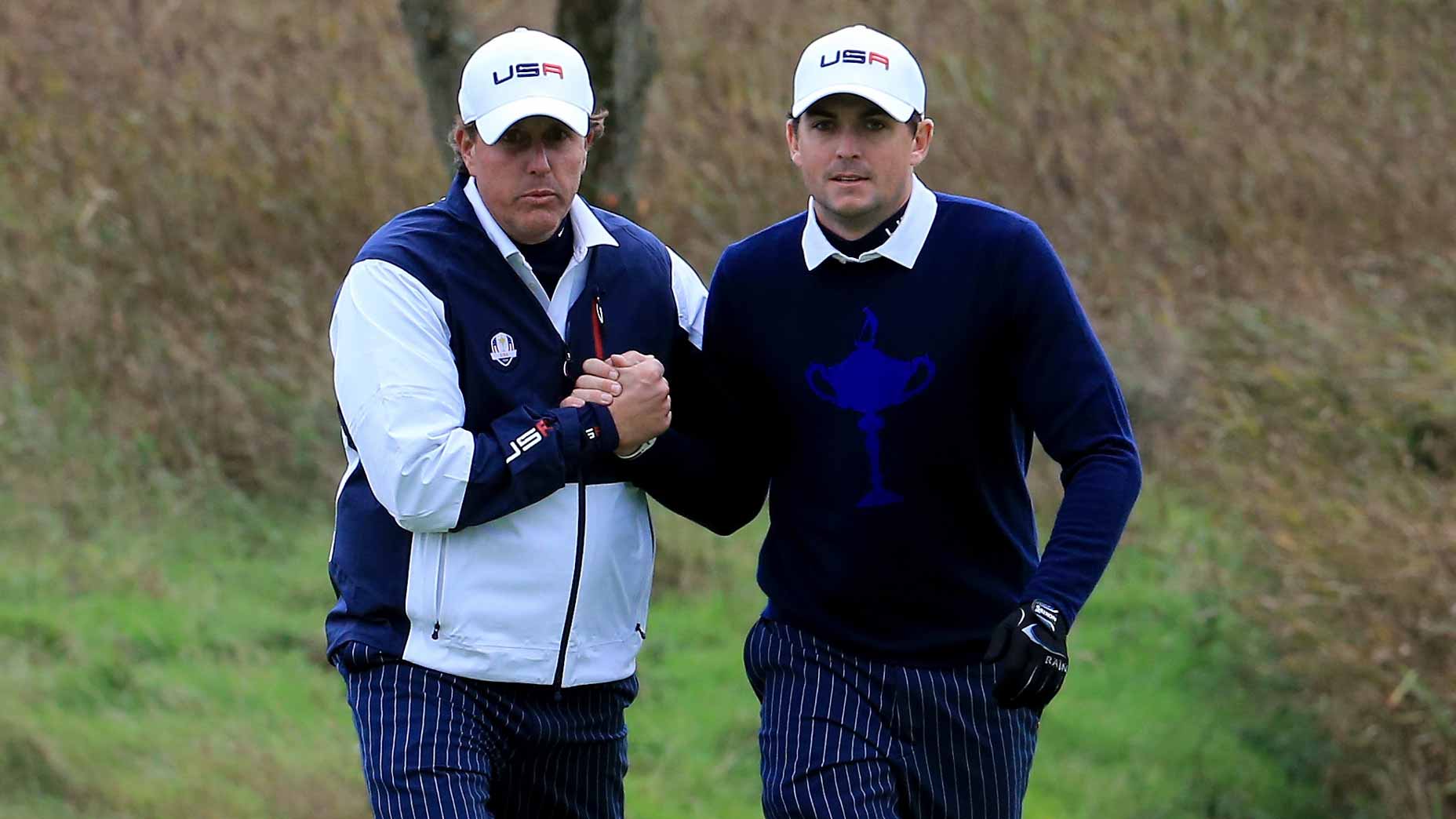As players arrive at Ryder Cup, little mysteries hide in plain sight
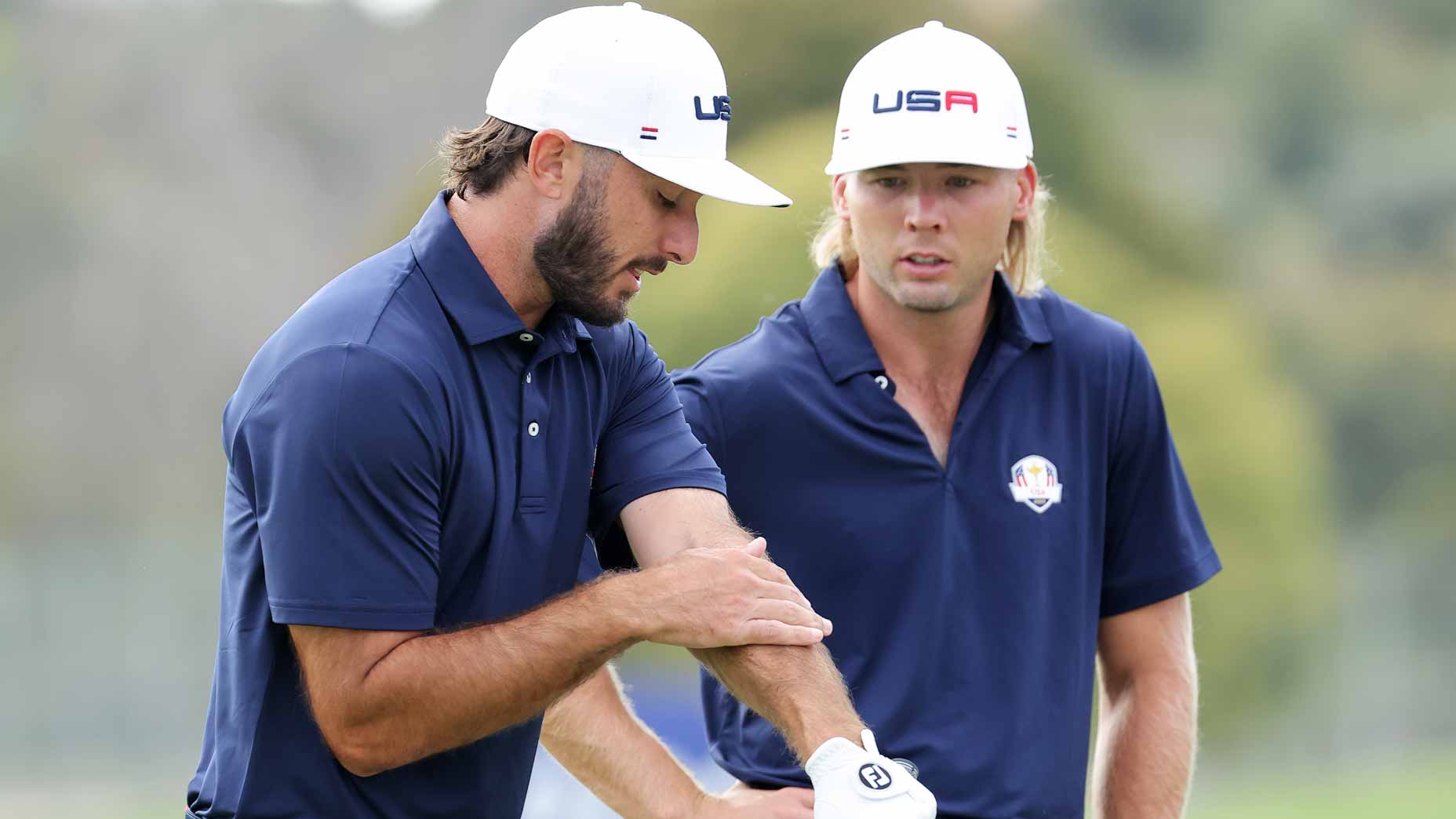
Max Homa and Sam Burns talking shop on Marco Simone's driving range.
Getty Images
MARCO SIMONE, Italy — On Monday of Ryder Cup week there’s not all that much to say — and plenty of time to say it.
“It’s hard to win outside your comfort zone,” offers U.S. captain Zach Johnson during Monday afternoon’s press conference. “It’s hard to win against a team that’s always been very, very formidable. It’s really just that simple.”
There’s plenty more like that in the captain’s presser. The other guys are gonna be tough to beat, but we sure want to! Hordes of media — in from Europe and from the U.S. and from parts beyond — hang on Johnson’s words, and on Luke Donald’s, but leave with few revelations. We’ve known the teams for months but we won’t have results for several more days. It’s tough to think of anything the captains would say at this point that would really surprise.
But on Monday at the Ryder Cup there’s still so much to see, so much to hear, so much to feel. The hamburger tents, up but not yet serving. The lawnmowers, small armies of ’em, giving haircuts to unruly patches of rough. The wind, whipping across certain elevated, exposed sections of course, certain to play a chaotic role later in the week. The golfing world has descended on Marco Simone Golf Club, a quirky course on a rural hillside some half-hour outside Rome. Twenty-four of ’em in particular will determine the next chapter of one of the biggest tournaments in the entire sport. It’s fun to watch how that begins.
Monday is unofficial; some players practice, others work out, others shake off jetlag away from prying eyes. We at GOLF are shaking off some redeye jetlag of our own. Powered by the first cappuccino of my life (I’m only a coffee guy under extreme duress) we set out for a trek around the course. I’m struck by the quirkiness of the layout, beginning with the winding, uphill par-4 1st. I’m struck by the rough, which graduates from okay to oof to definitely not okay as you get further from the edge of the fairway. A close inspection reveals particularly wide blades of grass with significant structural integrity; every patch stands like a solid green cityscape. Good lies aren’t impossible but they’re hardly guaranteed.
The most striking thing about the way the course is set up is the lack of “traditional” par-4s. Picture a stock PGA Tour hole; are you thinking of, like, a 425-yard par-4? Those don’t exist down the stretch this week. The final 12 holes of the course don’t offer a single hole between 330 yards and 450. There are 300-yard drivable par-4s and there are 500-yard beastly par-4s. These are half-par holes; they’re 3.5s and 4.5s for players of this caliber. Add in three par-5s in the final 10 holes plus the drivable 5th, 11th and 16th and you’re talking about a lot of holes with a wide variety in scoring and a continual pinballing from thrilling eagle looks to tricky par saves. Not everybody loves this course but I haven’t heard anyone suggest it will be anything less than a thrilling match-play test.
Scottie Scheffler is likely the most famous putter in golf at the moment, and not for the reasons he’d like: His ballstriking is so historically good that his substandard putting looks even worse by comparison. We haven’t seen the World No. 1 since the Tour Championship, so it was interesting to catch a glimpse of him on the practice green with putting guru Phil Kenyon by his side. Are they working together? Consulting? Just talking shop? These relationships can be tough to pin down, though I’m sure we’ll hear more as the week goes on.
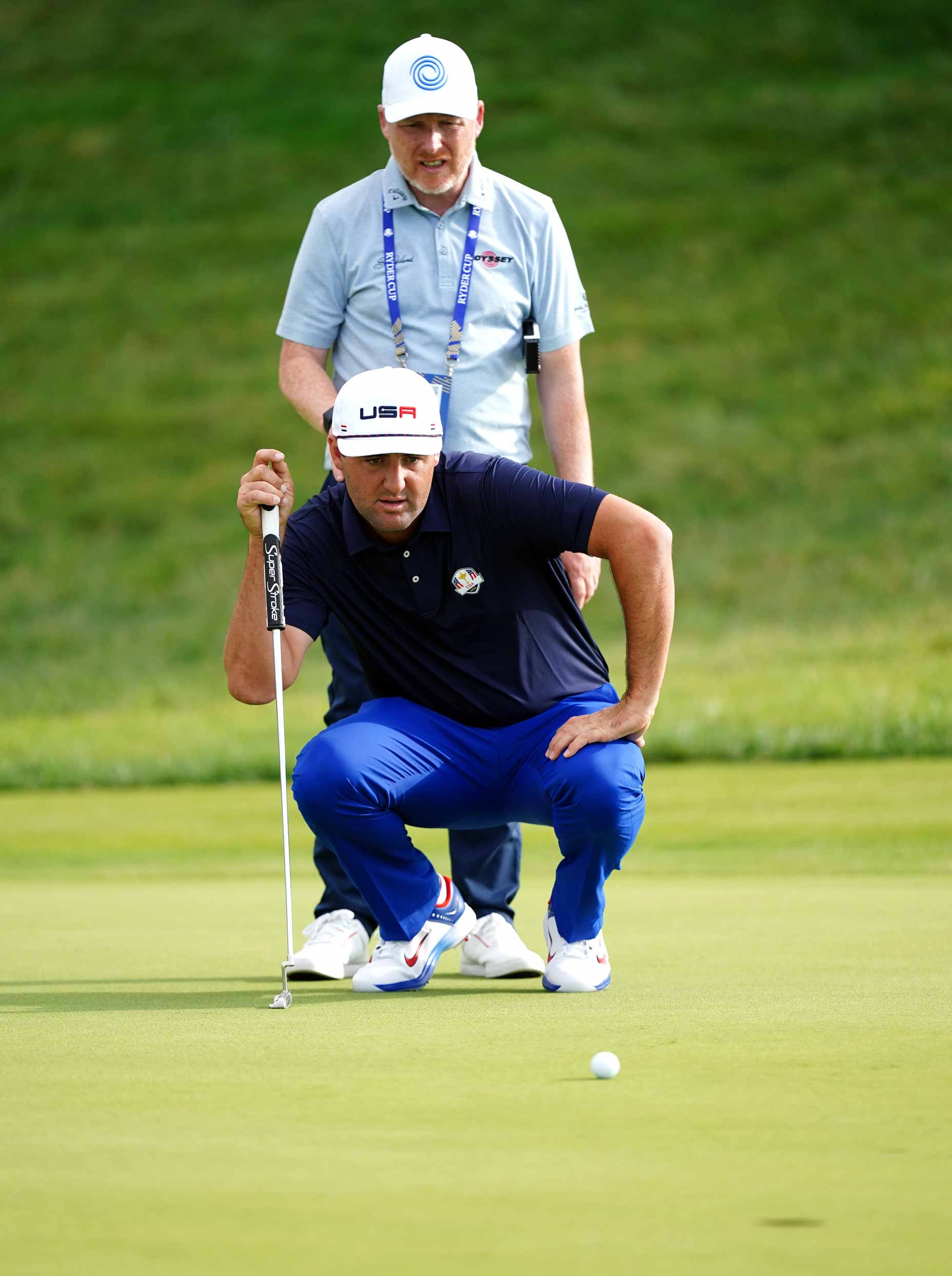
Another potential change: Scheffler is rocking a thicker SuperStroke grip on his Scotty Cameron putter, which marks a change since the Tour Championship. This may sound nerdy now, but every little thing counts, and Scheffler’s putting will be under an even stronger microscope this week given the high-pressure nature of match-play putts.
Justin Thomas is the other U.S. star whose putting has been in question, so it’s only fitting that he and Scheffler are the first two on the green on Monday afternoon. I’m less taken with his putting, though, and more taken with the drill Thomas is working a few minutes later, after walking to the chipping green. His caddie, Jim “Bones” Mackay, places a small yellow circle where he wants each chip to land. It’s cool to see Thomas’ awareness and he starts off with lower, skidding chips, which check up but roll out just enough to die beside the hole.

Then Mackay moves the circle closer to the hole and Thomas adjusts in kind, hitting higher, softer shots that land dead and spin to a stop. More go to kick-in range than don’t. He continues to mix in different spins and trajectories, hitting low hooking chips that run toward the hole and hard-spinning slice chips that slam on the brakes. This is a big week for Thomas. It’s also a big week for short games. Despite his lackluster PGA Tour season, Thomas still ranks fourth in strokes gained around the greens. That’s a strength he seems determined to maintain.
Down on the range, Max Homa and Sam Burns are engaged in animated discussion. Homa is demonstrating a feel he has on his takeaway, some move he makes with his arms and shoulders that helps keep things in a preferred position as he makes a deep turn. I won’t pretend to understand exactly what he’s saying but it’s interesting that he’s saying anything at all. It’s interesting to see Burns’ golf swing as a collaborative effort.
It’s no secret that Burns has been battling his irons this season. He’s losing strokes to the field and ranking 122nd on the PGA Tour after back-to-back seasons inside the top 30 in that category. We’ll see whether Homa’s tip sticks. And then we’ll see if we can get that tip, too…
And then there are the caddies. A swarm of seven or so U.S. loopers arrive at the first green and hop out of their carts in near-unison. They pace from front to back. They admire certain slopes, imagining possibilities. They take copious notes. They chat amongst themselves — dishing on the secrets of caddying, I imagine. There’s JJ Jakovac, Morikawa’s caddie. Joe Greiner, Homa’s caddie. Ricky Elliott, Brooks Koepka’s caddie. John Ellis, Wyndham Clark’s caddie. Austin Kaiser, Xander Schauffele’s caddie. And Joe LaCava, Patrick Cantlay’s caddie. Quite the brain trust.
“What’re you guys talking about on there?” I yell in LaCava’s direction as he whizzes by, piloting his golf cart toward the second tee.
“The Giants,” he yells back, with a smile, name-checking his maligned NFL team. Then he adds another. “And the Broncos.”
There’s time for that, too. It’s Monday of Ryder Cup week. Nobody will win — nor lose — until Friday. Between now and then they can tinker, and trade secrets, and take notes, and talk trash, and enjoy golf for the mundane daily pleasures of hitting a well-struck golf shot and figuring out how to hit a whole bunch more as the week goes on.
We’ll take pleasure in ’em, too.



